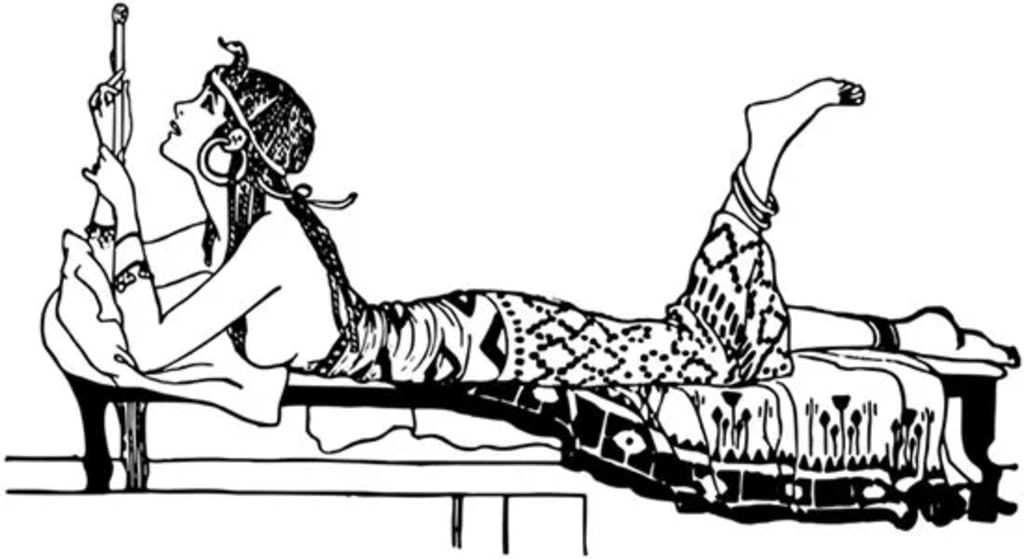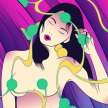
Exploring the intriguing history of vibrators, even if the tale about Cleopatra inventing them with bees is untrue, brings forth interesting insights.
The straightforward answer to who invented the electric vibrator points to Joseph Mortimer Granville in the late 1800s.
However, as is often the case with history, the reality is a bit more nuanced.
Key points about the vibrator's invention:
- The modern vibrator looks vastly different from its historical counterparts, and that's undoubtedly a positive evolution.
- Although there's a legend suggesting Cleopatra invented the vibrator using a hollowed gourd filled with bees, there's no historical evidence supporting this claim.
- Mechanical vibrators started appearing in the late 1800s, with Dr. George Taylor patenting the first steam-powered vibe in 1869.
- The first electromechanical vibrator, patented by Joseph Mortimer Granville in the early 1880s, marked a significant development.
- Initially, mechanical vibrators were designed for treating muscle aches and related health issues, not for genital stimulation.
- While it's commonly believed that vibrators were used in doctors' offices to treat female hysteria, inducing orgasms to help women "settle down," this wasn't as widespread a practice as rumored.
The predecessors of modern vibrators emerged in the late 1800s, and those devices, although sometimes frightening or amusing to look at, laid the foundation for what we have today.
We'll delve into the true inventors of the vibrator and the intriguing question of whether Cleopatra played a role in its creation.
Who Invented The Vibrator?
Sex toys have a rich history spanning millennia, and the credit for the first true electric vibrator is often given to Joseph Mortimer Granville, around the early 1880s. However, a more primitive version predates him.
Technically, Dr. George Taylor invented the first steam-powered vibrator in 1869, over a decade before Granville patented his electric variant.
But why were vibrators initially created?
The vibrator was originally conceived as a full-body massager, aiming to alleviate sore muscles and purportedly cure various health ailments.
Taylor's initial design was a steam-powered table, with the engine located in another room. The first electrical and hand-held vibrator, resembling modern massage guns and back massagers, was created for muscle relaxation and pain relief.
The prevalent belief is that vibrators were invented to bring women to climax as part of the treatment for "hysteria."
Hysteria, a now debunked medical condition, was associated with women experiencing stress, lethargy, or expressing independent thoughts. Doctors would manually massage the clitoris under the belief it released a supposed sexual blockage, a process sometimes lasting up to an hour.
While the act of self-stimulation can be relaxing, the notion of a clinical, hour-long session sounds less than appealing.
However, there's no concrete evidence supporting the widespread practice of this treatment. Granville himself discouraged using his invention for masturbation.
Electric vibrators were eventually mass-produced by sex toy manufacturing factories, becoming available for public purchase and home use. Soon, women discovered more enjoyable applications for Granville's invention, marking the beginning of a new era.
A vibrator, a cup of tea, and a snack—a perfect Sunday afternoon for many.
Cleopatra and the Bee Myth: Separating Fact from Fiction
No, there is no evidence supporting the claim that Cleopatra used a gourd full of bees as a vibrator.
The legend suggests that the Egyptian queen Cleopatra indulged in self-pleasure using a hollow gourd filled with bees, utilizing the buzzing insects for vibrations. Some variations even mention a papyrus box.
But did Cleopatra really invent a vibrator?
Upon investigating the origin of this assertion, the earliest mention of Cleopatra and her vibrating bees can be traced back to Brenda Love's book, "The Encyclopedia of Unusual Sex Practices," published in 1992.
Cleopatra's bees remain a mythical concept, and a rather absurd one at that.
Beyond the unsettling idea of placing a swarm of angry bees in a sensitive area, the logistics are perplexing. Whose responsibility was it to introduce the bees? Did Cleopatra fill the gourd herself, and how did she maintain the mood while handling live bees?
The entire scenario seems nightmarish, but if true, one might appreciate the level of commitment involved.
Wrapping It Up
Despite the debunked myth of Cleopatra inventing the vibrator, the narrative surrounding the origins of what we now recognize as vibrators carries an interesting male-centric tale.
During the vibrator's invention in the 1800s, doctors weren't aiming to empower women or address their sexual needs. Instead, the context reflects a patriarchal society's desire to constrain women, a notion we're thankful did not prevail.
Over the past 150 years, vibrators have evolved significantly, bearing little resemblance to their antique counterparts. Reflecting on their history allows us to better appreciate these devices and the pleasure they provide today.






Comments
There are no comments for this story
Be the first to respond and start the conversation.